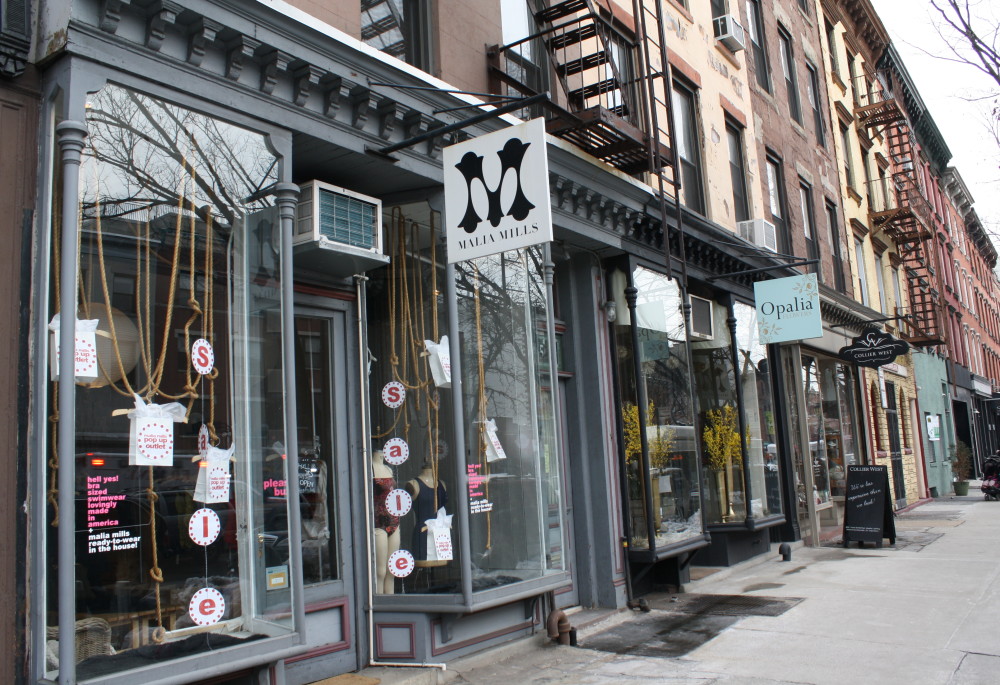358-364 Atlantic Avenue; 375, 377, 377A and 387 Atlantic Ave.; 394-402 Atlantic Ave.; 405-409 Atlantic Ave.; 406-420 Atlantic Ave.
c. 1850s
While there are many intact Victorian-era storefronts on Atlantic Avenue, the blocks between Hoyt and Nevins Streets contain a particularly dense concentration. It is believed that many of them date to before the Civil War due to the presence of St. Peter’s Episcopal Church (site #7a), since, in typical neighborhood development patterns, churches followed residential and commercial construction. A post-Civil War building boom led to the development of plate glass that made large storefront windows possible. Thus, these storefronts stand as evidence of Atlantic Avenue’s early history as a bustling shopping district. While this part of Atlantic Avenue is not protected by historic district status, it does benefit from designation as a special zoning district. In 1972, the combined efforts of the Mayor's Office, the Office of Downtown Brooklyn Development and the NYC Department of City Planning created the Special Zoning District on Atlantic Avenue between Court Street and Flatbush Avenue. These bulk and use regulations aim to preserve the avenue’s scale and character, including original architectural features like its Victorian-era storefronts. In 2004, when the City created the Special Downtown Brooklyn District, Atlantic Avenue's regulations were retained as the Atlantic Avenue Subdistrict.
